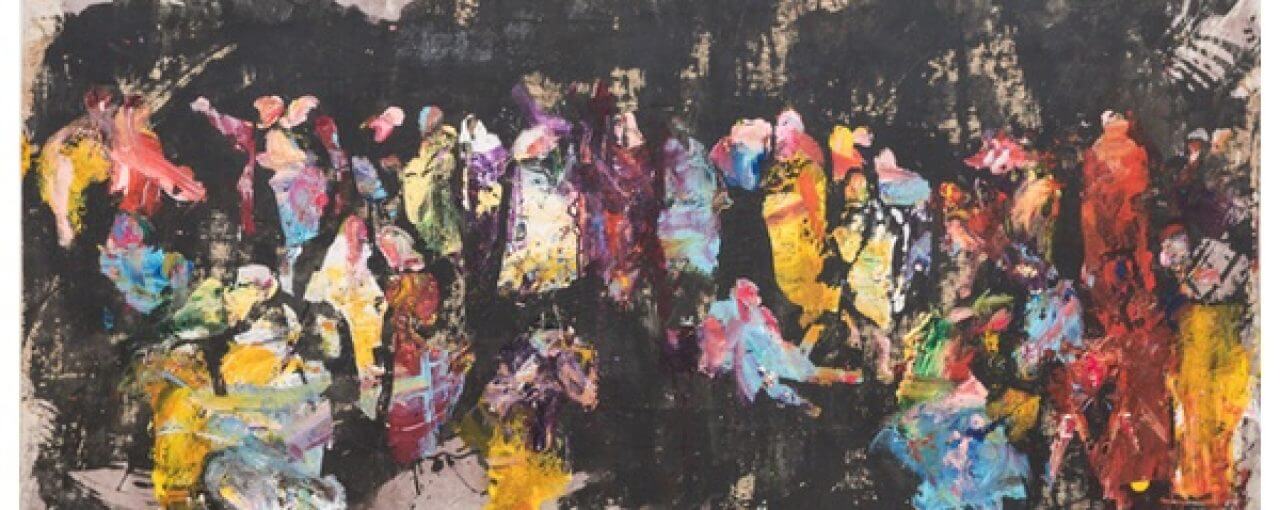Fall 2018 Highlights
By John S. Berman, WTP Art Correspondent
Four times a year, WTP art correspondents from around the country will report back on the previous season, with images from exhibitions you otherwise might have missed, and their own insights into these varied venues.
Contemporary artists mining historical subjects and themes for inspiration and source material is not only a time-honored tradition but also one that can be a challenge for even the most ambitious practitioner. How do you identify art of the distant past, deconstruct, re-invent, transform it, and make it your own both conceptually and aesthetically? This fall, four Brooklyn galleries showcased work by artists who reached back—from antiquity to the eighteenth century—to successfully create distinct and compelling images from appropriated materials that also reflect their uniquely different approaches to producing new work.
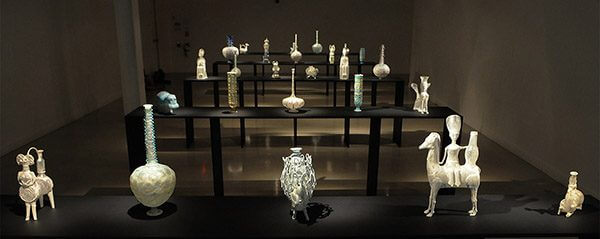
Walking through the spacious gallery of the Agnes Varis Art Center at Urban Glass in Fort Greene, one would be hard pressed to discern the difference between classic and modern objects in Shari Mendelson’s Glasslike. Drawing inspiration from Greek, Roman, and Islamic antiquities displayed in museums, Mendelson created a series of more than thirty sculptures from discarded and recycled plastic in and around her Brooklyn neighborhood that dramatically replicate ancient glass vessels and figurines arranged by curator Elizabeth Essner in neat, sequential rows illuminated by precisely placed spotlights.
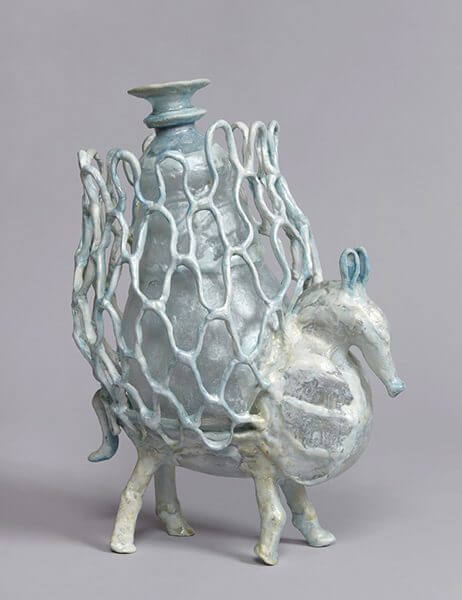
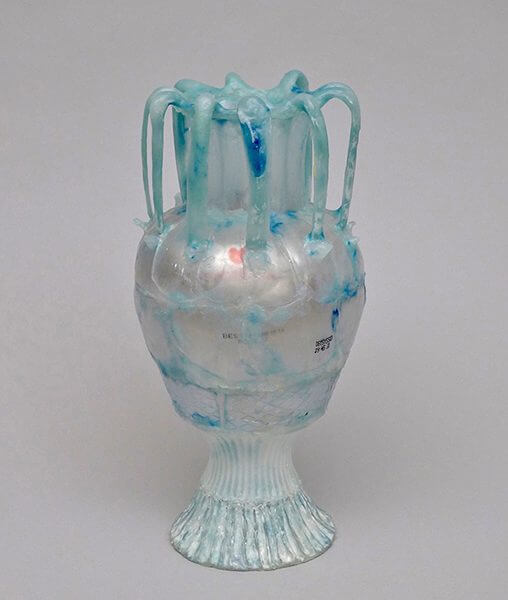
To further highlight connection between the two forms, Essner situates Mendelson’s vessels, assembled with hot glue, acrylic, mica, and paint, adjacent to actual glass artifacts, thus magnifying the artist’s works in context to their source of inspiration. What is extraordinary is not simply the uncanny resemblance of Mendelson’s pieces to her classic sources of inspiration but also how the disposable nature of her materials, which even have “sell by” dates on her creations in place of accession numbers, can also convey exquisite beauty and grace. In addition to creating a dialogue between past and present, Glasslike also raises important questions about our throwaway culture and its deleterious impact on the environment.
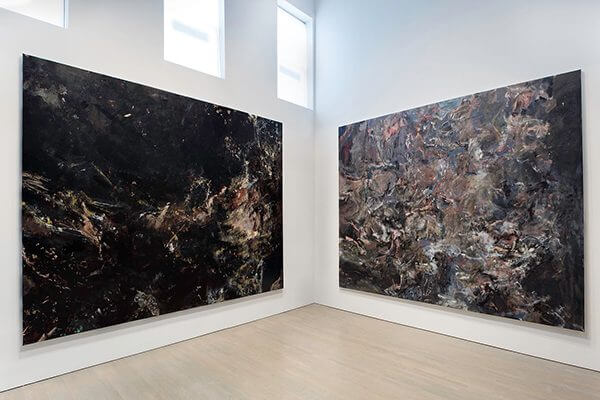
Right wall: James Hyde, Proserpine (Magnasco), 2018. Acrylic and urethane dispersion, house paints metallic and earth pigments, powdered glass on stretched vinyl print, 9′ x 12′
Prolific abstract artist James Hyde has his own unique ideas about fusing past and present. His Western Painting—Magnasco involves photographing works by often forgotten early eighteenth-century Italian Baroque artist, Alessandro Magnasco (best known for “The Temptation of Saint Anthony”); enlarging them to billboard size; applying a layer of varnish; and painting their surfaces with acrylic to create something totally authentic and different. Hyde then added a few additional ephemera of his own, including pieces of rubber detritus, to his four pieces, “The Sileni,” Marsyas,” “Proserpine,” and “Midas,” which took up every inch of wall space in David Dixon’s tiny rectangular Cathouse Proper gallery on the edge of Carroll Gardens.
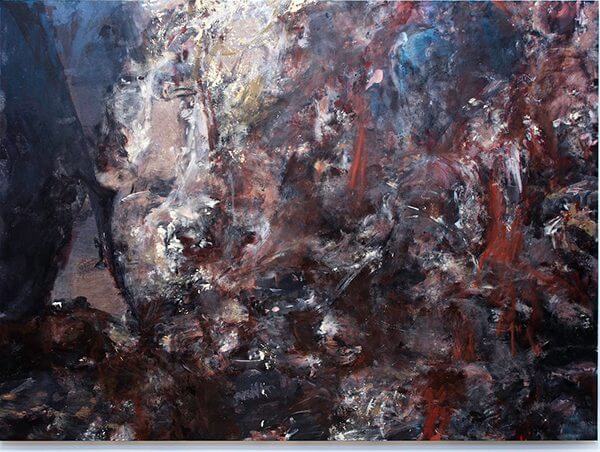
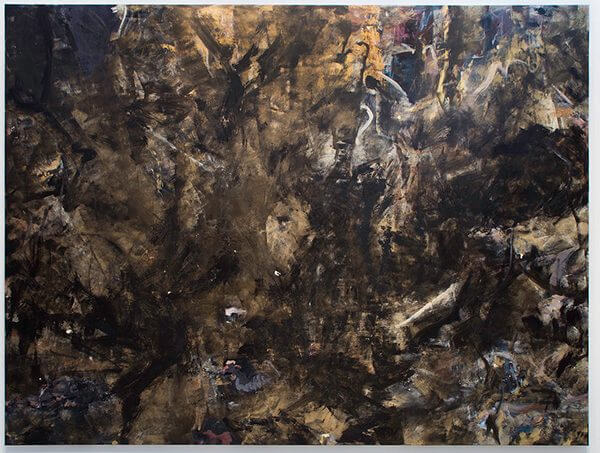
At first glance, these paintings look deceptively similar, but a closer viewing shows white flashes of light in the former two paintings which occupy one side of the gallery while the two other pieces are totally dark throughout—all surface—without any “air.” Hyde thus accomplishes two interconnected feats: he makes us think anew about Magnasco’s original vision, fantastical, grotesque, and satirical, and he creates work that is assertively his own—turning the late baroque inspiration into evocative abstract creations by one of contemporary arts strongest adherents to the form.
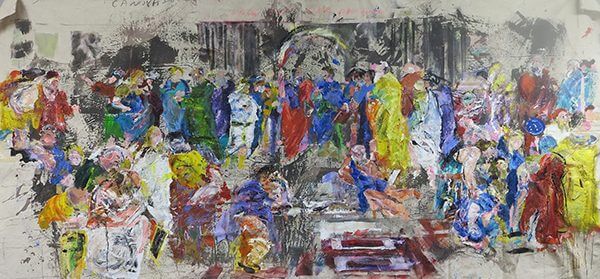
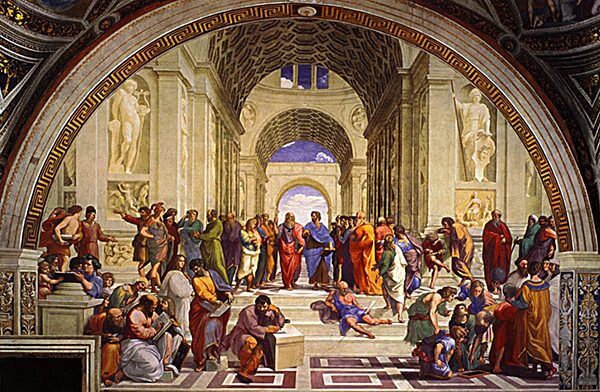
Italian painter, photographer, and filmmaker Vittoria Chierici reaches back several centuries earlier in her country’s history for The Philosopher’s Clothes, a series of large paintings dedicated to Raphael’s “School of Athens,” curated by Jennifer Bacon in the funky and purposefully dimly lit environs of Hanne Tierney’s Five Myles gallery in Crown Heights. Chierici playfully and dramatically interprets the philosophers and mathematicians in Raphael’s original fresco, in all their pomp and circumstance, using bright splotches of radiant color to depict abstract images of their dress tunics, their shape, and their imagined thoughts and conversations.
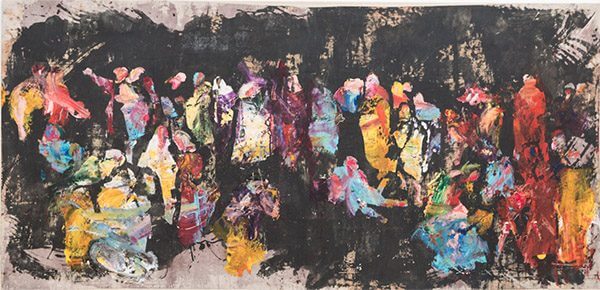
It is clear that the artist is paying homage to Raphael while also embellishing and riffing on the work’s theatricality and the flamboyant qualities of its subjects. The postures of her images and their ornate outfits, despite rejecting figurative outlines of any kind, still adhere to the posture of the original classic works. Chierici’s history and skills as a multifaceted artist in several mediums is powerfully evident in her ability here to make her characters come to life.
Two blocks south from Five Myles sits GRIDSPACE, a tiny room where mixed-media artist Charles Goldman lives and works, and invites individual artists to create displays that can be seen from an external window that looks out on the street. This fall, the eclectic and accomplished writer, curator, teacher, visual artist, and visionary Ann McCoy took the space and created The Procession of the Invisible College, based on a 1618 illustration by a German alchemist and botanist who used the pseudonym Theophilus Schweighardt. The original work was culled from a document called The Chymical Wedding of Christian Rosenkreutz, based on the ideas of a Christian mystic belief system that embraced the supernatural and paranormal.
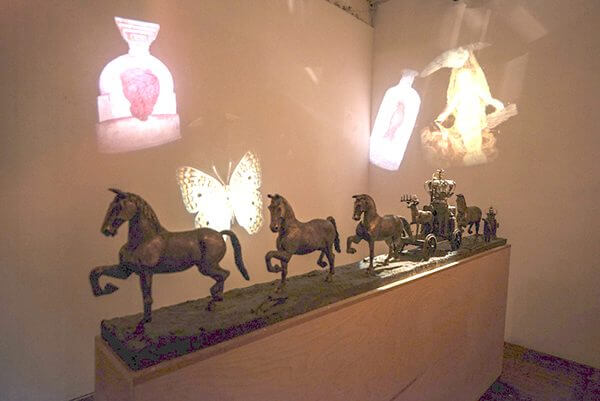
In her artist statement, McCoy states that she “liked the idea of a college that embraced invisible forces, alchemical imagination, and dreams.” Her work at GRIDSPACE combines a bronze processional sculpture of her mythical Invisible College building on wheels taken from the Shweighardt drawing with slide projection/light show with images from the natural world, such as a butterfly and salamander, combined with her own drawings, including a child in a lamp (who could be either male or female), a heart floating in a flask, and a black Madonna. The projected images on the walls float through the space and immerse the viewer in dream-like “other” world with the dark brown luster of the sculpture complementing the projections. McCoy studied Jungian psychology for many years in Switzerland, creating a deep and profound interest in fifteenth- through seventeenth-century alchemy, which informs this multi-talented artist’s ability to create a haunting and mesmerizing journey through her heart and mind.
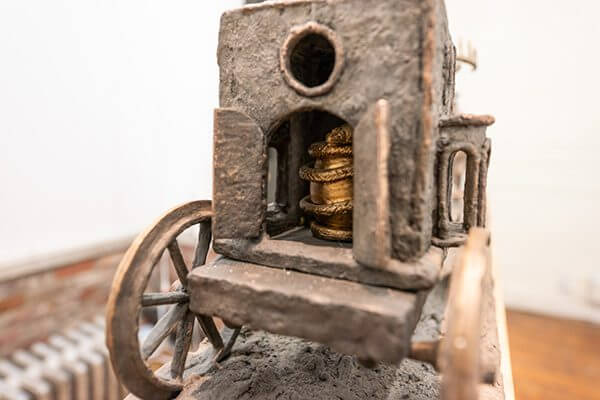
Viewed independently, each of these artists communicates a distinct and compelling visual narrative. Taken as a whole, however, these four engagements with the past provide us with a deeper and more dynamic meaning. They encourage viewers to re-conceptualize and re-imagine the older work as historical “muse” while at the same time vividly demonstrating the process by which contemporary artists create new and authentic statements that are firmly rooted in today’s world.
If you are interested in becoming an art correspondent for WTP, please inquire at wtp@thewoventalepress.net
Copyright 2018 Woven Tale Press LLC. All Rights Reserved.

